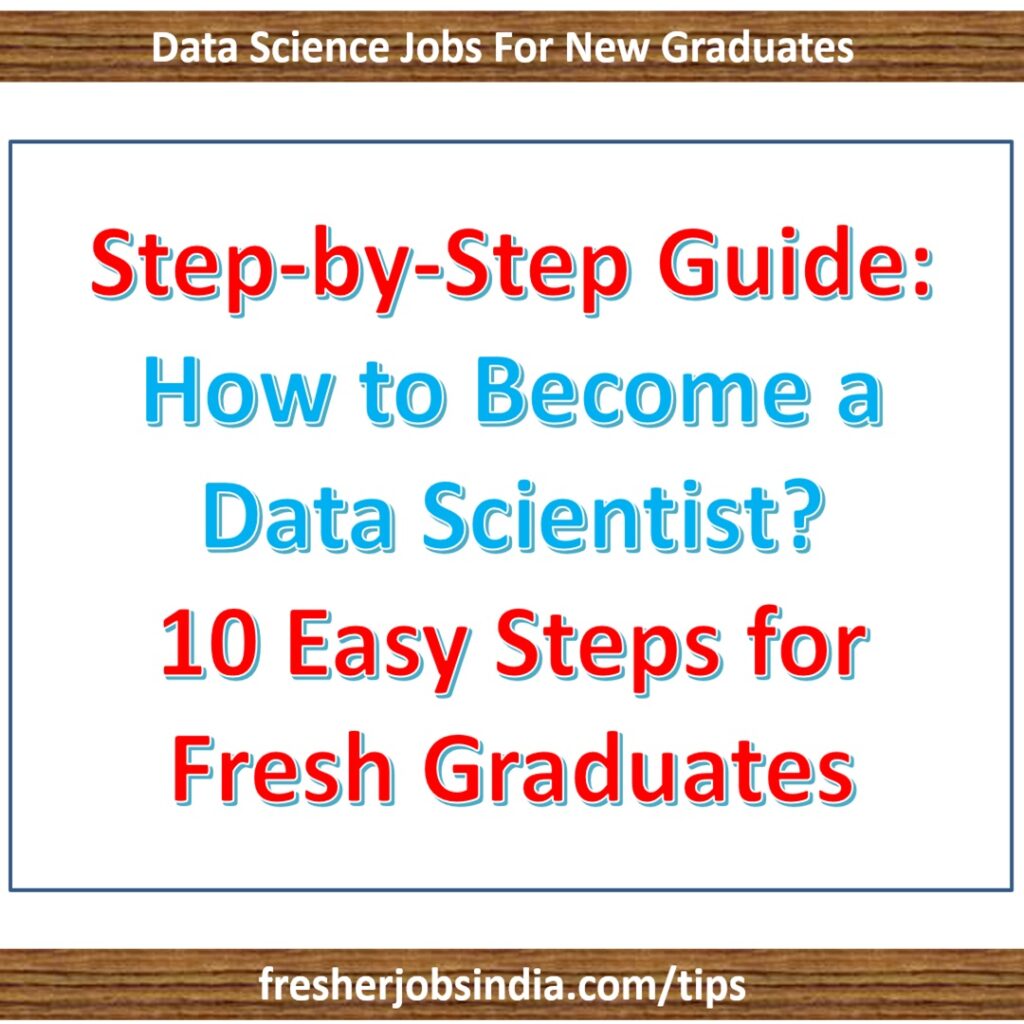Step-by-Step Guide: How to Become a Data Scientist?
Becoming a data scientist is an exciting career path that combines problem-solving, statistics, and technology. Whether you’re a fresh graduate or transitioning into the field, the journey to becoming a data scientist may seem challenging at first. But with the right steps and a clear roadmap, you can build the skills and experience needed to succeed in this high-demand profession. In this guide, we’ll walk you through a step-by-step approach to help you break into data science, even if you’re starting from scratch.

Becoming a data scientist as a fresh graduate can seem daunting, but if you break it down into simple steps, it becomes manageable. Here’s an easy-to-follow guide:
1. Learn Basic Programming (Python or R)
- Why? Data scientists use programming to analyze data.
- How? Start with beginner-friendly tutorials and courses in Python or R. These languages are widely used in data science.
- Resources: Websites like Codecademy, Coursera, or YouTube offer free resources.
2. Understand Math (Statistics and Probability)
- Why? Data science is all about making sense of numbers.
- How? Learn basic statistics and probability. You don’t need to be a math genius, but knowing how averages, probabilities, and distributions work is key.
- Resources: Khan Academy is a good starting point for basic math concepts.
3. Learn Data Handling (Excel and SQL)
- Why? Data scientists work with large amounts of data, and Excel and SQL are tools for organizing and retrieving data.
- How? Practice using Excel to analyze simple datasets. Learn SQL (Structured Query Language) to pull data from databases.
- Resources: Take online courses or follow tutorials on how to use Excel and SQL.
4. Learn Data Visualization (Tableau, Power BI, or Matplotlib)
- Why? Data scientists need to present their findings in a way that’s easy to understand.
- How? Practice creating charts, graphs, and reports using tools like Tableau, Power BI, or Matplotlib (for Python users).
- Resources: Free courses and videos are available online to help you get started.
5. Practice Machine Learning Basics
- Why? Machine learning helps you create models that can predict outcomes based on data.
- How? Start by learning the basic concepts of machine learning like classification, regression, and clustering.
- Resources: Take a beginner-friendly course on Coursera, edX, or Udemy.
6. Work on Real-World Projects
- Why? Hands-on experience helps you apply what you’ve learned and build a portfolio.
- How? Start with simple projects like analyzing a dataset from Kaggle (a website with real-world datasets), or do a data analysis project related to your personal interests.
- Resources: Websites like Kaggle or Google Colab are great places to find projects to work on.
7. Join a Community and Network
- Why? Meeting others in the field will keep you motivated and help you learn more.
- How? Join data science communities online (LinkedIn, Reddit, or Kaggle). Attend webinars, meetups, or hackathons.
- Resources: Many platforms host free events, and social media is full of networking opportunities.
8. Create a Portfolio
- Why? Employers want to see what you can do, not just what you know.
- How? Showcase your projects by creating a GitHub profile or a personal website. Include your code, analysis, and visualizations.
- Resources: GitHub is free and widely used by data scientists to share their work.
9. Apply for Internships or Entry-Level Jobs
- Why? The best way to become a data scientist is by getting real-world experience.
- How? Apply for data analyst or junior data scientist roles. These positions are often stepping stones to becoming a full-fledged data scientist.
- Resources: Use job boards like LinkedIn, Glassdoor, or Indeed to find opportunities.
10. Keep Learning
- Why? Data science is a constantly evolving field.
- How? Stay updated with new tools, techniques, and trends in data science. Take advanced courses and continue working on more complex projects.
- Resources: Subscribe to blogs, podcasts, or newsletters on data science.
Following these steps, you can gradually build the skills and experience needed to become a data scientist. Remember, it’s a journey, so take it step by step!
Join our Whatsapp Channel: Click Here
Join our Telegram Channel: Click Here
Join us on Instagram: Click Here
Copyright 2024 © Fresher Jobs – India. All Rights Reserved.